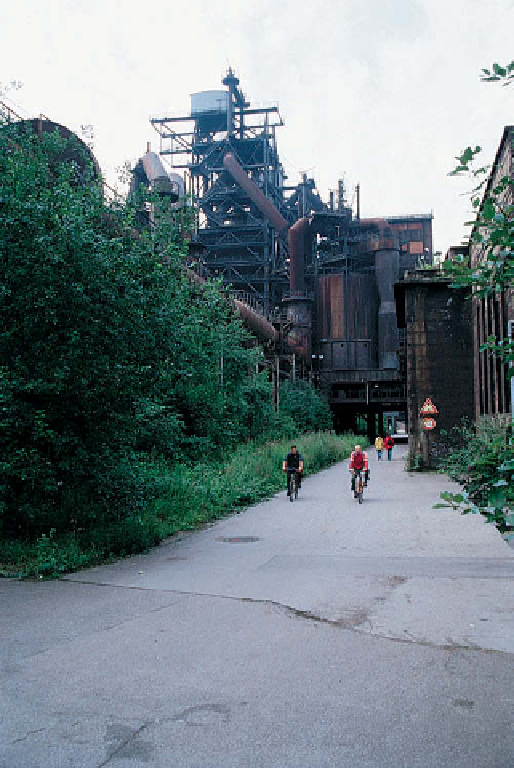Geography Reference
In-Depth Information
“workers of the world” to unite, conditions in European
manufacturing cities gradually improved. Industrialists
were forced to recognize workers' rights, and govern-
ments intervened by legislating workers' rights and intro-
ducing city planning and zoning. Many manufacturing
cities in North America never suffered as much as their
European predecessors, although living and working
conditions for factory workers (and “blue-collar” work-
ers generally) were far from satisfactory. American manu-
facturing cities did not altogether escape the problems of
the European industrial cities. During the late nineteenth
and early twentieth centuries, the American manufactur-
ing city grew rapidly, often with inadequate planning and
rapid immigration leading to the development of slums
and ghettoes.
During the second half of the twentieth century, the
nature of manufacturing changed, as did its location: cities
repositioned many factories away from congested, over-
crowded, expensive urban areas. Companies simply aban-
doned large manufacturing plants, making “rust belts” out
of once-thriving industrial districts. Many of these plants
still stand today, overgrown by weeds, with broken win-
dows and cracking walls (Fig. 9.18).
Although factories and factory jobs are not perma-
nent, the urbanization that went along with industrializa-
tion is still apparent. Depending on the sometimes vari-
able defi nition of “urban,” western Europe today is more
than 80 percent urbanized, and urbanization has become a
global phenomenon. Worldwide, more people now live in
cities than in rural areas.
Field Note
“The Ruhr Valley long functioned as the incubator of
Germany's industrial economy. Largely destroyed during
World War II, the Ruhr rose again to help Germany back
to recovery. But as declining transportation costs and ris-
ing labor costs prompted heavy industries to move their
operations to other parts of the world, factories such as
this iron and steel mill on the edge of Duisburg fell silent.
Unemployment soared, and the area became depressed.
In an effort to rebound, local authorities are now trying to
turn a few of these relics into tourist destinations. They are
unlikely to compete with the great churches or medieval
palaces found elsewhere in Germany, but for the geogra-
pher they provide fascinating insights into the urban and
economic arrangements that made modern Europe what
it is today.”
Archaeologists have found that the houses in Indus River cit-
ies, such as Mohenjo-Daro and Harappa, were a uniform size:
each house had access to a sewer system, and palaces were
absent from the cultural landscape. Derive a theory as to
why these conditions were present in these cities that had
both a leadership class and a surplus of agricultural goods.
WHERE ARE CITIES LOCATED AND WHY?
When you look at a map in an atlas of the United
States or Canada, or at a road map of a State or province,
you see an array of places of different sizes, with varying
distances between them. The map looks like a jumble, yet
each place is where it is because of some decision, some
perception of the site or its situation. Site and situation
help explain why certain cities were planned and why cit-
ies thrive or fail. To understand why a conglomeration of
Figure 9.18
Duisburg, Germany.
© Alexander B. Murphy.
















































